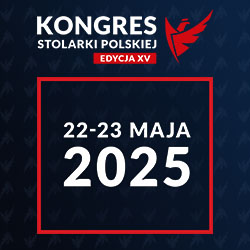Open Access (Artykuł w pliku PDF)
Neural networks and PCA principal component methods application to compress the results of the construction object’s displacement
dr hab. inż. Maria Mrówczyńska, prof. uczelni, Uniwersytet Zielonogórski, Instytut Budownictwa
ORCID: 0000-0002-4762-3999
Adres do korespondencji: Ten adres pocztowy jest chroniony przed spamowaniem. Aby go zobaczyć, konieczne jest włączenie w przeglądarce obsługi JavaScript.
DOI: 10.15199/33.2022.11.05
Oryginalny artykuł naukowy
Streszczenie. W artykule zaproponowano wykorzystanie metody transformacji PCA(Principal Component Analysis), realizowanej z wykorzystaniem sieci neuronowej do kompresji wielowymiarowych danych, uzyskanych w wyniku prowadzonych pomiarów geodezyjnych. Jako przykład możliwości zastosowania prezentowanego podejścia wykorzystano wyniki pomiarów przemieszczeń pionowych obiektu budowlanego. Testy oceny skuteczności zaproponowanego podejścia wykonano z wykorzystaniem współczynnika korelacji oraz błędu średniokwadratowego, który nie przekroczył dwukrotności błędu średniego pomiaru. Wyniki analiz numerycznych porównano z wartościami przemieszczeń pionowych punktów sieci pomiarowo-kontrolnej, uzyskanymi z rzeczywistych pomiarów. Wyniki sugerują, że podejście może znaleźć zastosowanie do kompresji, a następnie rekonstrukcji danych z monitoringu geodezyjnego bez zmniejszenia dokładności identyfikacji przemieszczeń.
Słowa kluczowe: geodezyjny monitoring obiektów budowlanych; przemieszczenia pionowe; sieci neuronowe; analizy składników głównych PCA.
Abstract. The article proposes using the PCA (Principal Component Analysis) transformation method carried out using a neural network to compressmultidimensional data obtained from geodeticmeasurements.As an example of the possibility of using the presented approach, the results of measurements of vertical displacements of a construction object were used. Tests to assess the effectiveness of the proposed method were performed using a correlation coefficient and a mean-square error that did not exceed twice the error of the average measurement. The results of numerical analyses were compared with the values of vertical displacements of the measuring and control network points obtained from actual measurements. The results suggest that the approach can be applied to the compression and subsequent reconstruction of geodetic monitoring data without compromising the accuracy of displacement identification.
Keywords: buildings geodetic monitoring; vertical displacements; neural networks; PCA principal component analysis.
Literatura
[1] Yanga DH et al. Monitoring and analysis of thermal efect on tower displacement in cable- -stayed bridge. Measurement. 2018; https://doi. org/10.1016/j. measurement. 2017.10.036.
[2] Nowogońska B. Konsekwencje błędnych decyzji remontowych w XVII-wiecznym budynku szkieletowym. Materiały Budowlane. 2021; https://doi.org/ 10.15199/33.2021.10.07.
[3] Błaszczak-Bąk Wet al. Optimization of point clouds for 3D bas-relief modeling. Automation in Construction 2022; https://doi.org/10.1016/j.autcon. 2022.104352.
[4] Skrzypczak I et al. Scan-to-BIM method in construction: assessment of the 3D buildings model accuracy in terms inventorymeasurements. Building Research and Information 2022; https://doi.org/10.1080/09613218.2021.2011703.
[5] Piniotis G et al. Deck and Cble Dynamic Testing of a Single-span Bridge Using Radar Interferometry and Videometry Measurements, Journal of Applied Geodesy 2016; https://doi. org/10.1515/jag-2015-0030.
[6] Mrówczyńska et al. compression of results of geodetic displacement measurements using the PCA method and neural networks. Measurement 2020; https://doi.org/10.1016/j.measurement. 2020.107693.
[7] LiaY et al.Accuracy enhancement of high-rateGNSS positions using a complete ensemble empiricalmode decomposition-basedmultiscalemultiway PCA. Journal ofAsian Earth Sciences 2019; https://doi.org/10.1016/j.jseaes. 2018.07.025.
[8] Wen L et al. Compression of smart meter big data: A survey. Renewable and Sustainable Energy Reviews 2018; https://doi.org/10.1016/j. rser.2018.03.088.
[9] Mrówczyńska M. Analysis of principal components used for modelling changes in glacitectonically disturbed areas. Journal of Water and Land Development. 2018; https://doi.org/10.2478/jwld-2018-0066.
[10] Wang H, Hong M. Supervised Hebb rule based feature selection for text classification. Information Processing & Management.2018; https://doi.org/10.1016/j.ipm.2018.09.004.
Przyjęto do druku: 03.10.2022 r.
Materiały Budowlane 11/2022, strona 16-18 (spis treści >>)






























